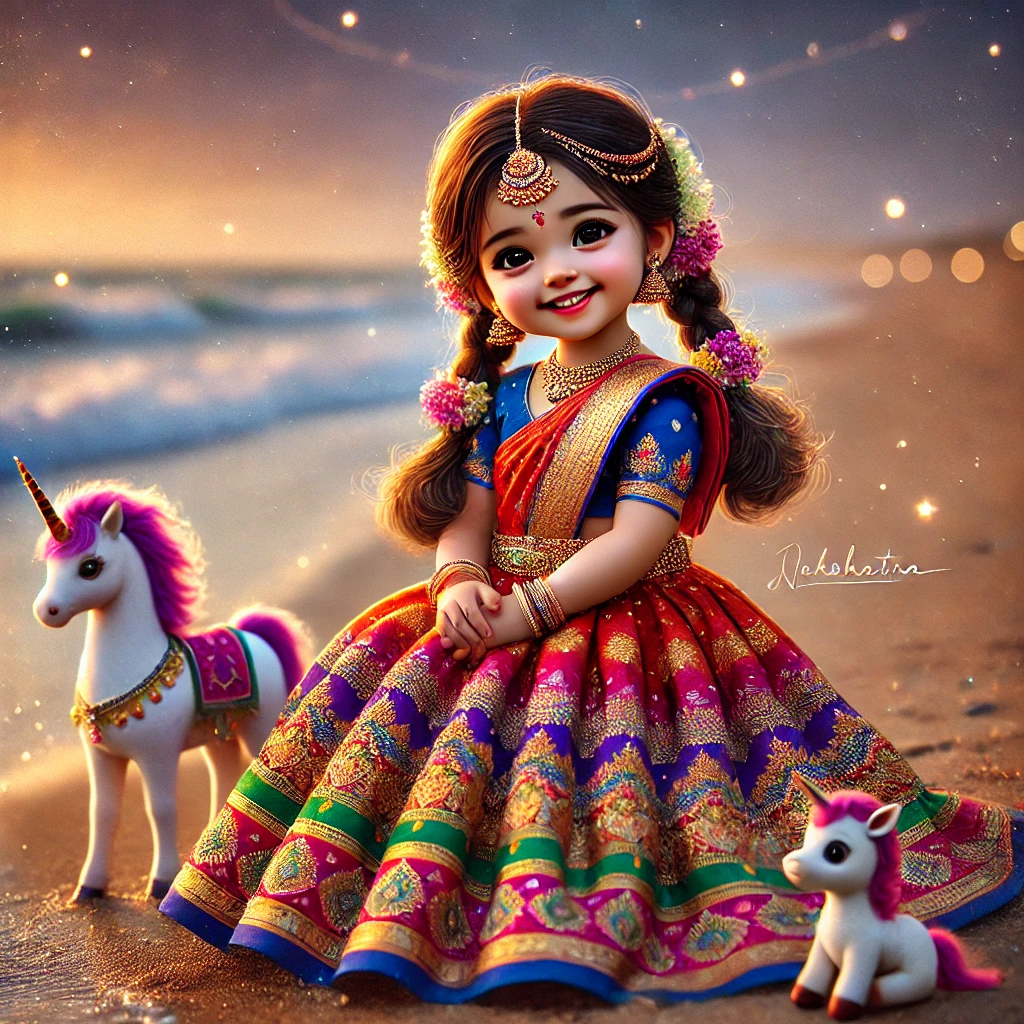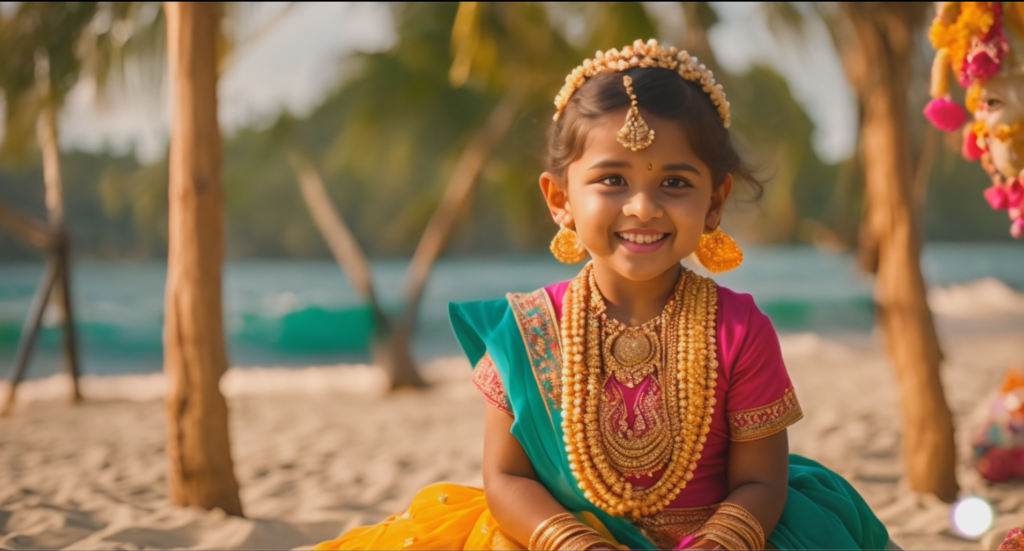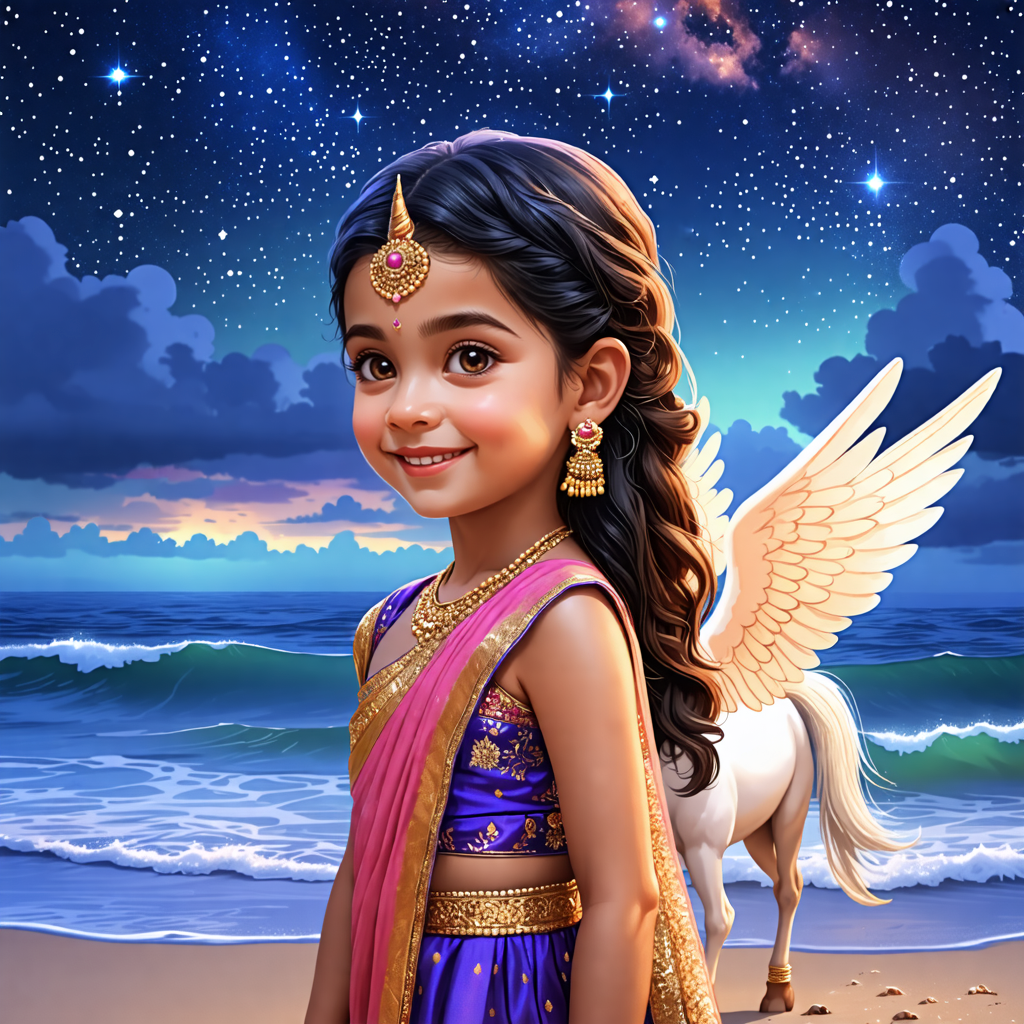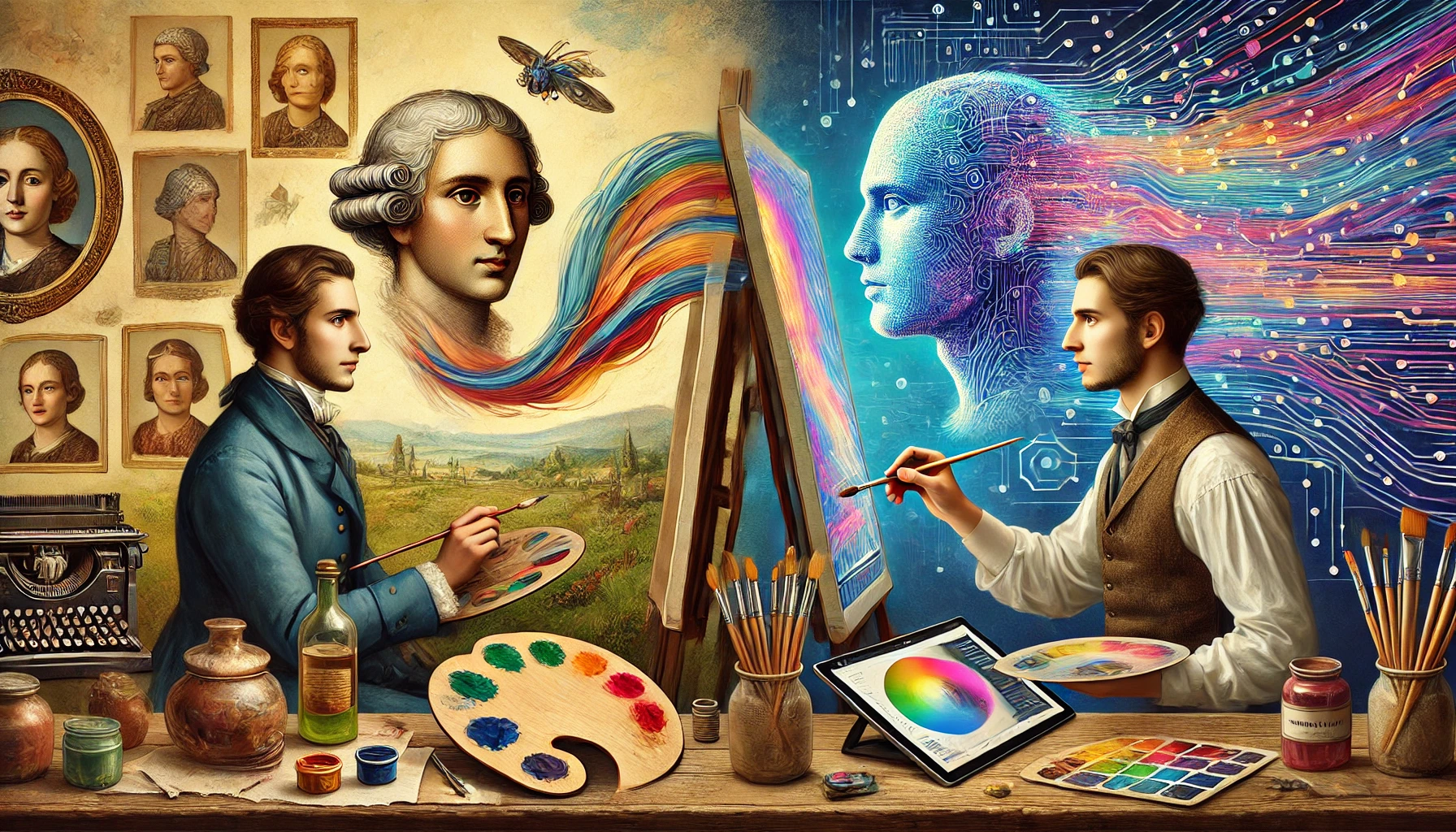Portrait painting has a long and rich history, evolving from early cave paintings to the sophisticated AI-generated art we see today. In India, this journey includes the intricate frescoes of the Ajanta Caves, the detailed paintings of the Rajput courts, the fusion styles of the colonial period, and the modern digital art revolution.
The Evolution of AI in Art
Artificial Intelligence (AI) has transformed numerous industries, and the world of art is no exception. AI-powered tools now enable everyone to unleash their imagination and creativity without needing the traditional skills of painting. Imagine being able to create stunning visuals from simple text descriptions! AI tools like DALL-E, MidJourney, Runway ML, and Stability AI make this possible, pushing the boundaries of creativity and making art more accessible to everyone.
Creating Stories: The Magic of Characters and Complementary Objects in Portraits
A well-composed portrait often features not just a character but also objects that complement and enhance the scene. These elements work together to tell a story, provide context, and evoke emotions. For example, Raja Ravi Varma’s painting of a lady with a lamp combines the character with an object to symbolize hope and enlightenment. Similarly, a modern portrait might show a child holding a beloved toy, adding depth and personal significance to the image. The inclusion of complementary objects enriches the narrative and aesthetic of the portrait, creating a more engaging and meaningful artwork.
Comparing AI-Generated Portraits from DALL-E, MidJourney, Runway ML, and Stability AI
To illustrate the capabilities of different AI image generation tools, we used the same whimsical and enchanting prompt across DALL-E, MidJourney, Runway ML, and Stability AI:
Prompt: “A cute 4-year-old Indian girl named Star, dressed in traditional attire. She is wearing a bright, colorful dress. Her hair is styled in two braids adorned with small flowers. She is smiling happily, with a twinkle in her eyes, sitting on a beach with the ocean waves gently rolling in the background. A realistic unicorn with colourful wings is also in the scene.”
Let’s dive into the magical results from each tool, along with their technical details and features:
1. DALL-E
DALL-E is a variant of the GPT-3 transformer model that uses transformer neural networks to generate images from textual descriptions. Built primarily on PyTorch and trained on a diverse dataset of text-image pairs from the internet, DALL-E excels in generating inclusive scenes with numerous objects. However, while it can include all specified elements, the characters tend to be less realistic and more stylized. DALL-E is also optimized for quick rendering of images, making it a fast and versatile tool.
Features:
- Inclusive object generation.
- Characters are less realistic.
- All objects described are present.
- Fast image generation.
2. MidJourney
MidJourney uses a combination of advanced neural network techniques, likely involving GANs (Generative Adversarial Networks), to focus on artistic and creative image generation. Though specific frameworks are not disclosed, it likely uses a mix of common deep learning libraries. MidJourney is known for creating highly detailed and sharp characters, producing a blend of realism and artistic flair. Objects are also generated, but they cannot be moved once placed, and each iteration may affect the overall output.
Features:
- Detailed and sharp characters.
- Objects are present but may be misplaced.
- Objects cannot be moved; iterations affect output.
- Blends realism and artistic flair.
3. Runway ML
Runway ML integrates various AI models, including GANs and CNNs (Convolutional Neural Networks), to offer a suite of AI tools for image generation and manipulation. Using multiple frameworks like TensorFlow and PyTorch, Runway ML is trained on extensive datasets tailored for creative tasks. This tool excels at creating highly realistic characters but includes very few objects in the scene, focusing primarily on the character’s realism and quality.

Features:
- Highly realistic characters.
- Minimal object inclusion.
- Focuses on character realism and quality.
4. Stability AI
Stability AI uses advanced neural network techniques, focusing on detailed and realistic image generation. Likely involving transformer models and GANs, and built on deep learning libraries such as PyTorch and TensorFlow, Stability AI is trained on extensive datasets of text-image pairs. This tool excels at generating highly detailed and realistic characters but tends to mix up the placement of characters and objects, which can affect the overall scene.
Features:
- Enhanced character depiction.
- Objects and characters may be misplaced.
- Produces highly realistic images.
AI Artists’ Choice: Ranking the Best Tools for Text-to-Image Creation
4th. Stability AI
Produces highly detailed and realistic characters, but objects and characters may be misplaced, affecting the overall scene.
3rd. Runway ML
Best suited for creating highly realistic characters, though it includes very few objects in the scene.
2nd. DALL-E
Ideal for users seeking to generate images with many objects and detailed specifications. It provides inclusive object generation but characters are less realistic.
1st. MidJourney
The best choice for those looking for sharp and detailed characters, with objects present but not always properly placed, and each iteration affecting the overall output.
Thanks to AI, everyone now has the power to bring their imagination to life, creating stunning art without needing traditional painting skills. The future of creativity is here, and it’s accessible to all.
For more such interesting articles, follow me on LinkedIn.
